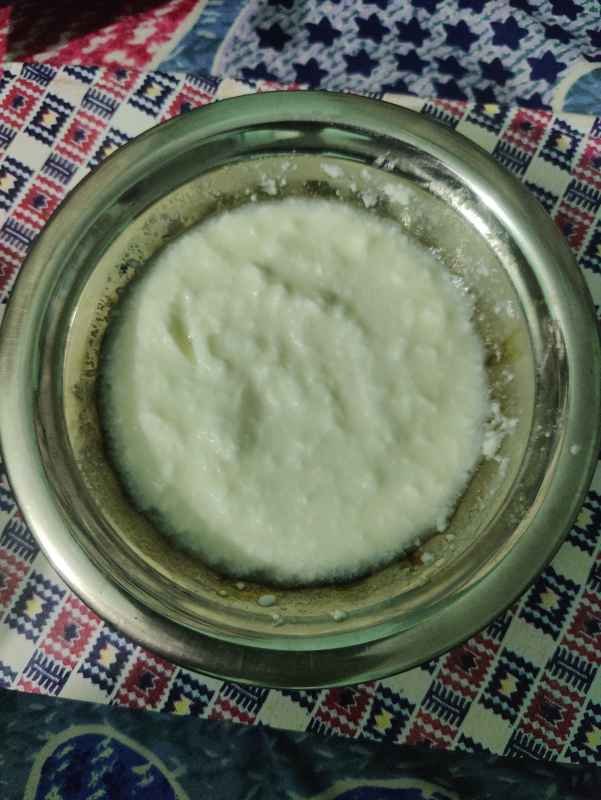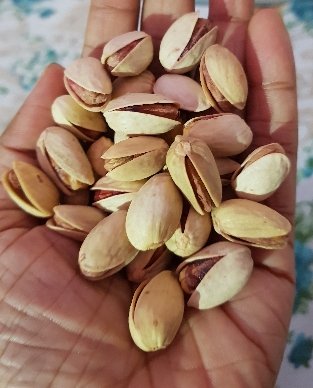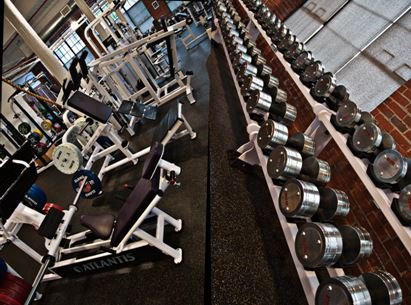Scientific Weight Loss & Comments
Scientific weight loss, learning how to successfully lose weight and keep it off permanently, starts with understanding old weight loss science versus new weight loss science relative to your real scientific body type (quiz/test).
“According to the University of Michigan, about 90% of people who lose significant amounts of weight — whether through diet, structured programs, or drastic steps like gastric surgery — ultimately regain just about all of it”
Video: Scientific Weight Loss – Old Weight Loss Science vs New Weight Loss Science

Video: Body Type Science – How To Scientifically Determine Body Type (The Four Body Types)

How Accurate is the Mainstream Science & Medical Doctor Calories In-Calories Out (CICO) Model of Scientific Weight Loss? Not Very.
Calorie = Energy. The human body requires calories/energy to function and survive. The calories from carbohydrates, fat, and protein in food are turned into glucose (a type of sugar) and used by the body, Even though it is true that all calories have the same amount of energy, it is a myth that a calorie is a calorie is a calorie.
The Myth that a Calorie is a Calorie
The fact is, the metabolism of the human body is complex. Depending on the  type and quality of food, it is broken down and metabolized differently than other foods. Some foods are more metabolically efficient overall than others, which means that some calories are more energy-efficient and valuable than other calories.
type and quality of food, it is broken down and metabolized differently than other foods. Some foods are more metabolically efficient overall than others, which means that some calories are more energy-efficient and valuable than other calories.
This is why counting calories is NOT the end-all solution to successful weight loss. The most recent scientific studies strengthen this stance.
Calories from food with high-quality protein and fats are much more metabolically efficient and valuable, which helps increase satiety (feeling full) while reducing appetite and thus calorie intake. Whereas, nutritionally inferior processed, junk, and fast foods loaded with low-quality fats, proteins, and carbohydrates (especially refined sugars) are metabolically inefficient. Their calories are less efficient and less valuable.
They may taste good going down, but the body cannot use the energy from such empty-calorie processed, junk, and fast food nearly as efficiently. This inefficiency leads to continued food cravings and the body feeling hungry, which leads to eating more calories. Which then leads to being overweight and obese.
Why Properly Executed Low-Carb/Keto Diets Actually Do Work – Scientific Weight Loss
The speed at which processed, junk, and fast food carb calories hit the system has a dramatic effect on their potential to cause overeating and weight gain.

The higher the Glycemic Index (GI), which is directly sugar (a type of carb) related — especially refined/added sugar (think fast food fries, hamburger bun, milkshakes, donuts, pizza, sodas/pop/coke, etc.) — the more a spike in blood sugar which directly affects insulin. A GI of 70 or more is a high-glycemic-index food (rapid rise in blood sugar) — not good for low-carb diets and linked to Type 2 diabetes and obesity, no less. Between 56 to 70 is considered a medium glycemic index rating. And 55 or below is low-glycemic, recommended for low carb and keto diets.
The more a spike in sugar, the more the body has to work (insulin, for one) to balance the blood sugar. The more insulin required to balance things out over time, the higher the probability of experiencing insulin resistance. Hence, the more negatively taxing the process is on the body. This can lead to diseases like obesity and Type 2 diabetes, no less, and is sometimes called the blood sugar roller coaster ride.
The Science – Low Carb/Keto Diets
 Scientific studies consistently show that people who eat the most high-GI processed, junk, and fast foods are at the greatest risk of experiencing obesity and becoming diabetic. Because it is a fact that not all carb calories are created equal, and thus not all foods are created equal. How valuable a calorie is matters.
Scientific studies consistently show that people who eat the most high-GI processed, junk, and fast foods are at the greatest risk of experiencing obesity and becoming diabetic. Because it is a fact that not all carb calories are created equal, and thus not all foods are created equal. How valuable a calorie is matters.
The very latest science shows that successful weight loss is achieved through a low-carb keto diet which helps regulate insulin. The bullseye is 37 grams of carbs on average per day while consuming high-quality protein and fats (olive oil, flax oil, etc.). Moreover, 45 minutes to 1.5 hours daily, at least 6 days per week (in the short-term), of steady-state, medium-intensity walking is best to help boost metabolic rate/metabolism. Body type matters, as how much skinny fat you have on your body affects metabolism as well.

Successful Scientific Weight Loss – Food Quality & How Many Valuable Calories You Consume In Your Daily Diet Matters
The more inefficient a food’s metabolic pathway is — like with processed, junk, and fast foods — the more of that food’s energy is wasted (particularly as heat) and the less is used for actual BMR metabolic work. If the quality of  the food is not significantly improved, if empty calorie food with less valuable calories is not removed in favor of adding significantly more VALUABLE calories to the diet, the inefficient metabolic vicious cycle continues usually leading to being overweight or obese, and even diabetic. This is one main reason why most people are not successful at weight loss and cannot get off the overweight and obesity roller coaster ride.
the food is not significantly improved, if empty calorie food with less valuable calories is not removed in favor of adding significantly more VALUABLE calories to the diet, the inefficient metabolic vicious cycle continues usually leading to being overweight or obese, and even diabetic. This is one main reason why most people are not successful at weight loss and cannot get off the overweight and obesity roller coaster ride.
Choose whole, natural, organic (if possible) foods low in sugar (natural, avoid added sugar) and high in fiber (a type of carb) as well as quality protein and fat to help you get off the ride. The science-based Blue Zone Meditteranean Diet can be low-carb and is most recommended. Remember, the higher the quality the food is in terms of cleanliness and overall nutritional value (quality protein, good fats, good carbs, naturally occurring vitamins & minerals, antioxidants, etc.) as well as how appropriately the food is handled and prepared, the more valuable the calories. How many valuable calories you consume in your daily diet is one of the main factors in successful scientific weight loss.
Muscle Efficiently Burns Calories, Fat Inefficiently Burn Calories – The Four Body Types

Science currently recognizes that, at rest, for every 10 pounds of muscle, 60 calories are burned. Yet, for every 10 pounds of fat, only 20-30 calories are burned. The National Council on Strength and Fitness states that muscles/muscle mass at rest will burn approximately 6 calories daily per pound, while fat burns 2 to 3 calories daily per pound. If you are a Body Type Two (BT2), Body Type Three (BT3), or Body Type Four (BT4), you most likely have skinny fat (thin fat, cellulite, crepey skin, loose skin, saggy skin, normal weight obesity) on your body where there should be muscles/mass.
When your Standard BMR (basal metabolic rate) — the total number of calories your specific human body requires daily for basic functioning — is calculated using the Mifflin St Jeor equation and Harris-Benedict equation for activity, it is calculated directly relative to the Standard Scientific Human Body Anatomy Book Body Type One (BT1) and fully developed muscles/mass, no less.
Yet, both equations give zero importance or weight to skinny fat. None. If you have skinny fat in place of muscles/mass, your body requires fewer calories than your Standard BMR.
Body type matters. This is another main reason why most people are not successful at weight loss and cannot get off the overweight and obesity roller coaster ride.
Skinny Fat and Fat Burn Much Fewer Calories than Muscles/Mass

The more skinny fat and fat you have on your body where there should be muscles/mass, the fewer calories your body actually requires in terms of BMR. Yet, you are held to the standard Mifflin St Jeor and Harris-Benedict equations as typically calculated because mainstream science and medical doctors only recognize the Body Type One (BT1) as being a valid body type. If you are a BT2, BT3, or BT4 using the standard Mifflin St Jeor and Harris-Benedict formulas to calculate your daily recommended calories, you are likely still eating too many calories.
Example: If I am a Body Type Two and my standard Mifflin St Jeor equation BMR is 1680 calories, but I have skinny fat on my body where there should be muscle, then, depending on how much skinny fat, my Standard BMR will actually be lower than 1680 calories. The Scientific Body Type Quiz calculates my Adjusted Mifflin St Jeor BMR to more accurately estimate my body types’ specific daily calorie intake needs.
Because, again, 10 pounds of fat/skinny fat at rest only burns 20-30 calories compared to 10 pounds of muscle at rest which burns 60 calories. Add in exercise, and things get even more inaccurate because muscles burn more calories than skinny fat or fat. Period, the end.
This is one of the reasons why Fellow One Research developed The Four Body Types including the Adjusted Mifflin St Jeor.
Brown Fat
There is a lot of hype currently concerning brown fat, or brown adipose tissue. Most fat in the body is white fat, which stores energy in fat droplets across the body. Too much white fat leads to being overweight or obesity. However, brown fat, being rich in mitochondria, burns white fat as energy to produce heat when it is cold.
Brown fat is generally stored in small deposits around the shoulders and neck. It might be possible to naturally activate and enhance brown fat activity, but it is unclear at this time how much brown fat helps with weight loss and management. Body type affects how much brown fat a body has.

Old vs New Scientific Weight Loss Standards – How to Successfully Lose Weight (The Keys)
Key #1 – Old Science – Standard Scientific Human Body Anatomy Book Body Type One (BT1):

A licensed medical doctor will look you over and determine whether you have a “normal” Standard Scientific Human Body Type Anatomy Book Body Type One (BT1) or if you have a malformation, abnormality, underdevelopment, or the like of some sort. If you are “normal” then you are a Body Type One (BT1). The only reason you may not look like a BT1 is because you are eating too many calories daily. Consistently consuming too many calories (above your basal metabolic rate/BMR) per day adds fat weight to the body and will eventually take you outside your safe Body Mass Index (BMI) weight range into the overweight or obese column.
New Science: There are four (4) scientific Body Types, not just one.
Key #2 – Old Science – Standard Body Mass Index (BMI) Safe Weight Range:
 Calculated relative to your height, if you are within your safe Body Mass Index (BMI) weight range you are a normal and healthy Body Type One (BT1) with all muscles, muscle mass, and posture fully developed (unless a licensed medical doctor has diagnosed your with an abnormality, underdevelopment, or the like). If you are outside your safe BMI weight range in the overweight or obese columns, you need to reduce daily calorie consumption and increase exercise to burn the excess stored calories (fat) to get back to your normal, safe BMI weight range.
Calculated relative to your height, if you are within your safe Body Mass Index (BMI) weight range you are a normal and healthy Body Type One (BT1) with all muscles, muscle mass, and posture fully developed (unless a licensed medical doctor has diagnosed your with an abnormality, underdevelopment, or the like). If you are outside your safe BMI weight range in the overweight or obese columns, you need to reduce daily calorie consumption and increase exercise to burn the excess stored calories (fat) to get back to your normal, safe BMI weight range.
New Science: Body type matters. Especially if you are a Body Type Two (BT2), Body Type Three (BT3) or Body Type Four (BT4), any skinny fat (cellulite, thin fat, crepey skin, loose skin, saggy skin, normal weight obesity) on your body where there should be muscles/muscle mass makes your Body Mass Index (BMI) inaccurate, no less. This means your BMR as per the Standard Mifflin St Jeor formula and Harris-Benedict equation is also inaccurate.
Key #3 – Old Science – Standard Mifflin St. Jeor Equation, Calculated Basal Metabolic Rate (BMR):
Your Standard BMR (basal metabolic rate) is the number of calories your specific body  requires daily to do all its basic functioning. Calculated using the Mifflin St. Jeor formula. If you are eating more calories than your BMR then you need to reduce calories. You may have to increase exercise as well to help burn the excess calories/fat. Once you are back within your safe BMI weight range you will once again look like a BT1 (unless diagnosed by a licensed medical doctor otherwise) with all muscles, muscle mass, and posture fully developed. You can eat whatever you want, as a calorie is a calorie. So long as you keep your calories at or below your daily BMR you will successfully maintain and manage your weight.
requires daily to do all its basic functioning. Calculated using the Mifflin St. Jeor formula. If you are eating more calories than your BMR then you need to reduce calories. You may have to increase exercise as well to help burn the excess calories/fat. Once you are back within your safe BMI weight range you will once again look like a BT1 (unless diagnosed by a licensed medical doctor otherwise) with all muscles, muscle mass, and posture fully developed. You can eat whatever you want, as a calorie is a calorie. So long as you keep your calories at or below your daily BMR you will successfully maintain and manage your weight.
New Science: Body type matters. Especially if you are a Body Type Two (BT2), Body Type Three (BT3) or Body Type Four (BT4), any skinny fat on your body where there should be muscles/muscle mass makes your Standard Mifflin St Jeor equation BMR inaccurate, no less. Science recognizes that one pound of muscle burns 6 calories per day, while one pound of fat only burns 2 to 3 calories per day. This means you likely need fewer calories daily as per your Adjusted Mifflin St Jeor BMR (see Body Type Quiz). A calorie is not a calorie. Some calories are more valuable than other calories. Quality of food and ingredients matter.
How To Access the Scientific Weight Loss Diary & Ask Gnosis Commenting
*Once you have taken the Scientific Body Type Quiz and determined your body type, you can sign-up to begin using the Scientific Weight Loss Program (Basic or Advanced) to scientifically track your weight loss progress. Review a current weight loss program participant.
*The Advanced Scientific Weight Loss Program includes expert Ask Gnosis Commenting (individual Ask Gnosis Commenting can be purchased separately).

*The Ask Gnosis Comments below for diet, exercise, and lifestyle are real questions asked by actual weight loss diary participants. All questions are scientifically answered by the expert Ask Gnosis team. You can also join the conversation without weight loss diary access by signing up for a free subscriber account.
*You can use a Pen Name to protect your privacy and anonymity — all photos are face-free.
Diet
All Scientific Weight Loss Ask Gnosis Diet Comments minus Food Items/Products
All Scientific Weight Loss Ask Gnosis Diet Food Items/Products ONLY (minus All Other Diet Comments)
Exercise
All Scientific Weight Loss Ask Gnosis Exercise Comments (Cardio & Resistance)
Lifestyle
All Scientific Weight Loss Ask Gnosis Lifestyle Comments







































































































































































